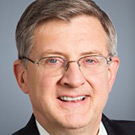|
|
 |
|
The views expressed on this page are soley
those of the author and do not
necessarily represent the views of County
News Online
|
 |
Microsoft’s
Plan to Expand Broadband Would Benefit Rural Americans
Alden Abbott
August 07, 2017
The growth of “broadband” (or high speed) internet access has bestowed
enormous benefits on the American economy.
Roughly 300 million Americans have access to broadband—increasingly on
mobile devices—which enables them to buy and sell goods and services;
carry out business transactions; connect with clients, friends, and
relatives; and obtain their entertainment, among other uses.
In short, readily available and affordable broadband is viewed more and
more as a necessity by many Americans, much like water, electricity,
and basic transportation.
But too many Americans, particularly in rural areas, still do not have
broadband access.
Americans need an alternative to the mainstream media. But this can't
be done alone. Find out more >>
According to the Federal Communications Commission’s 2016 Broadband
Progress Report, 34 million Americans—about 24 million of them in rural
communities—do not have broadband.
This means that many students, farmers, doctors, law enforcement
officials, small-business owners, and families across rural America are
being denied the benefits of broadband access.
For example, as The Wall Street Journal recently explained:
Counties without modern internet connections can’t attract new firms,
and their isolation discourages the enterprises they have: ranchers who
want to buy and sell cattle in online auctions or farmers who could use
the internet to monitor crops. Reliance on broadband includes any
business that uses high-speed data transmission, spanning banks to
insurance firms to factories.
Private sector help is on the way, though.
In July, Microsoft announced a “Rural Airband Initiative” to invest in
partnerships with telecommunications companies to bring broadband
connectivity to 2 million more people in rural America by 2022.
Microsoft also stated that, to serve the broader goal of providing
broadband to over 23 million more Americans, it was
launching a new technology program to share what we’ve learned with
other companies. We’ll also help stimulate investment through
royalty-free access to at least 39 patents and sample source code
related to technology we’ve developed to better enable broadband
connectivity through TV white spaces spectrum in rural areas.
“White spaces spectrum” refers to unused “buffer channels” between
active TV channels in the VHF and UHF spectrum—which, thanks to
technological advances, can now be used to provide broadband internet
access without interfering with surrounding TV channels.
A bipartisan July 31 letter to the FCC, signed by 42 leading members of
Congress, explained that white space frequencies allow a broadband
internet connection to cover nine miles, while navigating the physical
terrain that at times can make wireless broadband connectivity
difficult.
This range and flexibility make white space internet connections cost
effective and dependable. What’s more, using white space requires
minimal infrastructure investments.
Although the FCC commendably has freed up spectrum for rural broadband
use, a bit more “spectrum unshackling” work needs to be done.
The July 31 congressional letter urged that the FCC reaffirm new rules
enabling unlicensed devices to operate in white spaces, and take
additional action to ensure that three usable TV channels remain
available for broadband transmission purposes in every market around
the country.
This advice is sound. It further frees spectrum from existing
regulatory limitations, making it available for highly beneficial—and
efficient—broadband internet use.
It is always great to see the private sector step up to the plate and
propose new investments that leverage technologies and provide
valuable, in-demand services that will benefit millions of Americans.
Microsoft’s proposal for rural broadband expansion, based on its own
innovative business thinking that leverages regulatory reforms, is a
terrific example.
Read this and other articles at The Daily Signal
|
|
|
|

